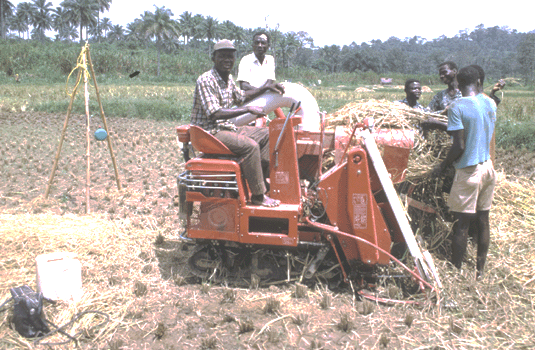 |
Large scale irrigated rice development | |
|
|
|
|
|
In 1969 the government established a pilot project for a large scale rice development
in Foya, Upper- Lofa County: The Foya project. The project was initially carried
out by the Department of Agriculture in cooperation with rice agronomists of CAM
(Taiwanese Chinese Agricultural Mission in Liberia). However, soon it was
realized that irrigated rice development was a complex issue, which required
additional technical inputs. The government therefore requested in addition, assistance
from the United Nations Development Program,-the FAO Development of Rice
Cultivation Project- and the USAID/Peace Corps for agricultural extension and
co-operative development. Before the establishment of the Foya project, the area was covered with a forest of huge trees with a very dense and difficult to penetrate under-vegetation especially in the lower lying parts of the river valley and some dense swampy parts. The clearing of trees and vegetation was done by heavy machinery, including crawler tractors. After cutting down the trees and the other vegetation, all this was chopped up and burned. Some large tree stumps remained on the field, until sufficiently dried to allow burning. After land clearing, the main irrigation & drainage canals and diversion dams were constructed. Subsequently the land was divided into plots of 0.5 ha and a system of tertiary or on-farm canals and bunds constructed with inlet and outlet gates. After completion of the plot layout, the land within each plot was leveled by wheel tractor. After this the land was flooded and the second leveling and puddling was done. Puddling was needed to form a hard pan. This pan was required to retain irrigated water on the field during the growth of the rice, which is a water plant and which needs standing water to grow. The next step was row planting of improved rice seedlings of improved IRRI varieties. The rice seedlings were taken from seed nurseries established three weeks before planting. After this fertilization, weeding and pest control was carried out and the rice was harvested about 120 -130 days after planting. The average rice yield per hectare was 2 000kg/ha ranging from1500-4 000 kg for the initial two crop years.
|
Slideshow Large scale
The rural economy
|
|
|
Charles van Santen December 2005 |
||